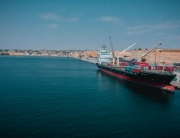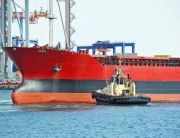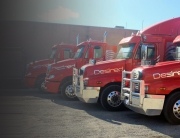Do you know that every year around 11 billion tons of goods are moved via ships? With the passage of time, a wide array of multimodal shipping containers have emerged according to the needs of the logistics chain which have ensured the appropriate handling of cargo.
Being a part of the logistics industry, knowing the different equipment and innovations that already exist can help us understand the opportunities better. Using appropriate terminology can also help us better communicate our needs. The most crucial component of the entire shipping, trading, and transportation sectors is the container unit. Shipping containers are structures used to store various products that need to be transported around the globe in different types of container ships.
We have shed light on 7 vital types of shipping containers that are typically used on the basis of products they transport.
Dry Storage Containers
These are containers used for general purposes, they are enclosed, safeguarded from the elements and weatherproof, with a stiff roof, sidewalls and floor. They have various lengths such as 10, 20, and 40 feet, and they are used to haul dry goods. These containers are not suited for moving food or chemicals that require refrigeration container.
Flat Rack Container
These containers do not come with a top and have only two sides. Generally, a flat rack container can be 20 or 40 feet long and designed with materials such as steel for strength and durability.
Some flat rack containers can be foldable as well and some have extra walls that are linked to the frame. They are perfect for shipping goods that are bigger such as heavy machinery, vehicles on tracks etc.
Open Top Container
This looks the same as a dry storage type but does not have a top. It has a plastic roof structure that can be tied to the container with ropes and that safeguards against rain and other types of precipitation. In the upper and lower side rails and corner posts, some rings ensure that cargo is safe and secure.
Open-side Storage Container
An open-side container comes with one long side that can be opened without any hindrance. This feature lets you have a spacious room and access, facilitating the operations of loading and unloading materials. This is especially advantageous for the wide merchandise that is quite difficult to get through the end of a dry storage container. Open-side storage containers generally are of sizes 20′ and 40′.
ISO Reefer Container
These containers are best used for temperature sensitive and perishable cargo. These container types often depend on external power sources to regulate the temperature. Reefers are 20’ and 40′ and they are best used to move cargo such as meats, fruits and vegetables
Half Height Containers
Half height containers move cargo in bulk. This type of cargo is heavy and dense. These containers are the best for moving goods such as coal, stones etc. They can better manage bulkier loads as compared to taller containers which make them versatile and robust enough to perform best even in the rough industrial environment. Half height containers are optimal for easy loading and unloading.
High Cube Containers
High cube (HC) shipping containers have the same structure as that of general-purpose containers, but it is taller by about 1 foot. These containers generally have sizes 40′ and at times 45′. These are used when there is a need for greater volume capacity.
To Conclude
Different containers have distinct purposes in the shipment of freight. The basic terminology could enable all the stakeholders to comprehend the predicaments at every level, in a better way. Also, the operations can become smoother and hassle free hence controlling mistakes and delay.






Leave A Comment